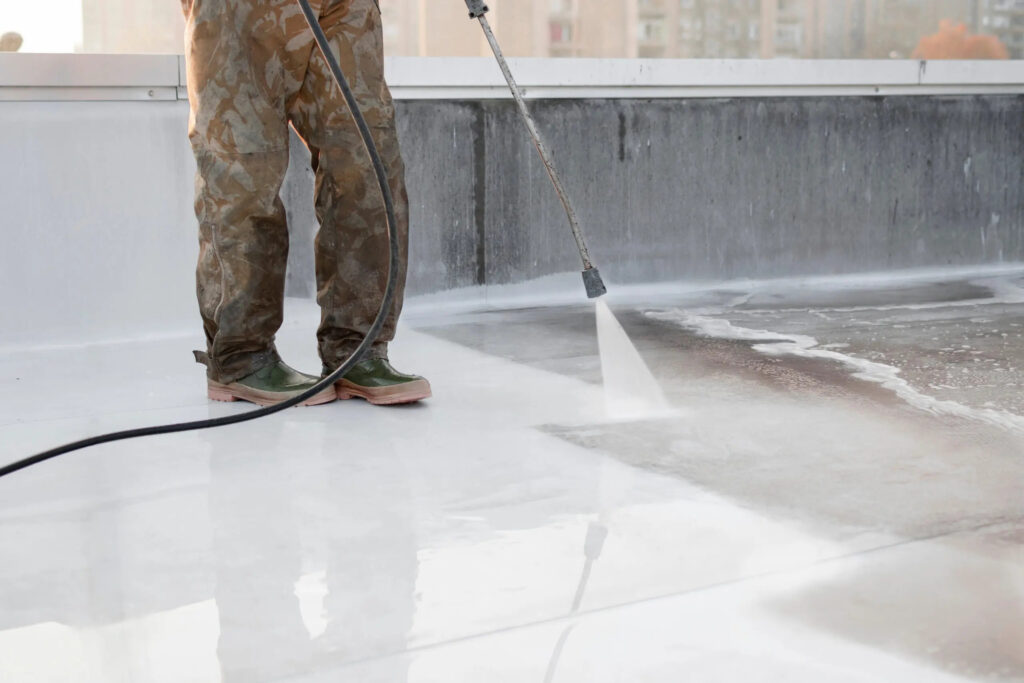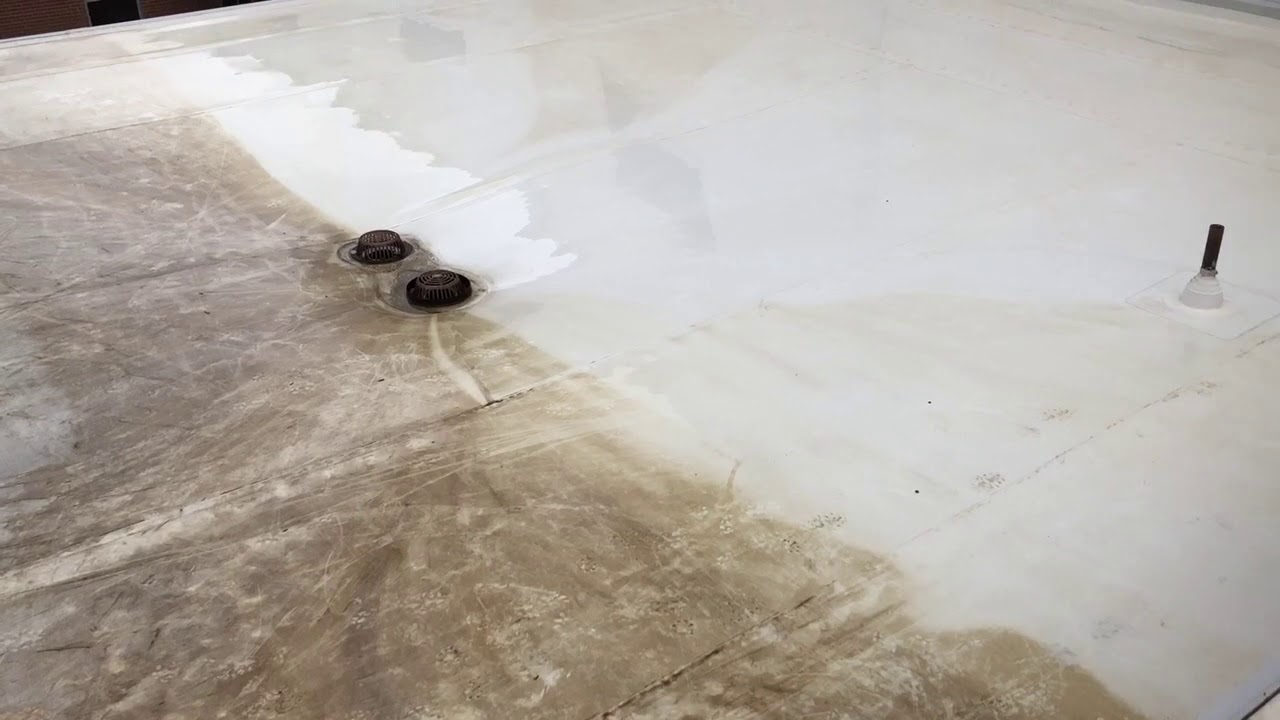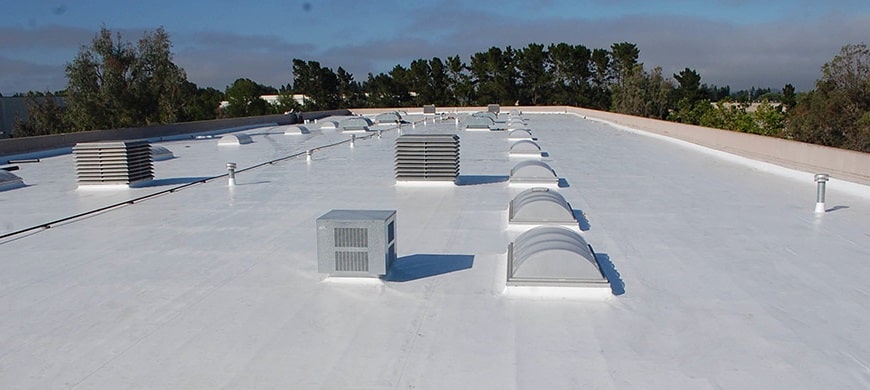
Thermoplastic polyolefin (TPO) roofs are highly valued for their energy efficiency, reflective properties, and durability. However, to maximize these benefits and extend the roof’s lifespan, regular maintenance, including periodic pressure washing, is essential. Here, we explore the importance of maintaining TPO roofs, the effects of dirt accumulation on heat reflection, and how routine cleaning can protect your investment.
1. Why TPO Roof Maintenance is Essential
A well-maintained TPO roof can last over 30 years, providing long-term savings and stability. TPO roofs are particularly susceptible to accumulating dirt, algae, mold, and chemical pollutants that can compromise the roof membrane, reducing its efficiency and increasing the risk of damage. When debris and grime settle on the membrane, it creates a favorable environment for biological growth that can weaken the roof material and potentially lead to leaks and tears, especially at seams and around vents and curbs. Notably, scheduled cleaning mitigates these risks by keeping the membrane clear of contaminants and protecting it from abrasive damage that shortens its service life
2. The Impact of Dirt on Heat Reflection and Energy Efficiency

One of the core reasons for selecting TPO roofing, particularly in warm climates, is its high solar reflectivity. The reflective white surface repels solar radiation, keeping internal temperatures cooler and reducing HVAC costs. However, when dirt and debris accumulate, this reflective quality diminishes significantly. A dirty TPO roof absorbs more heat instead of reflecting it, undermining the roof’s cooling capabilities and causing energy costs to rise. Research shows that keeping TPO surfaces clean restores their reflectivity, allowing buildings to retain the cooling benefits that TPO roofing systems are known for
3. How Pressure Washing Enhances TPO Roof Longevity
Regular pressure washing removes not only the visible dirt but also embedded contaminants, mold, and mildew, which erode the membrane’s durability over time. Experts recommend using a low-pressure washer (no higher than 2,000 PSI) to prevent punctures or abrasions, which can lead to costly repairs. The washing process involves rinsing with a non-abrasive cleaner, followed by a soft bristle push broom to lift dirt toward drains, which prevents standing water and residue that can deteriorate seams and adhesives. Cleaning also prevents surface brittleness and cracking, keeping the membrane flexible and resistant to UV damage
4. Step-by-Step Guide for TPO Roof Cleaning
a. Preparation
Before starting, protect areas where water can enter the building, such as seams and curbs. Ensure all safety measures are in place, as TPO surfaces can become slick during washing.
b. Initial Rinse
Use a low-pressure washer to remove loose debris and dust.
c. Cleaning Solution Application
Apply a TPO-approved cleaner with a soft-bristle broom, working section by section towards the drainage areas to avoid pooling. Avoid harsh chemicals that can strip the membrane’s UV protectant coating.
d. Final Rinse and Inspection
Once the roof is washed, thoroughly rinse away all cleaner and debris. Finally, inspect for potential damage or weak spots, particularly at seams and around penetrations, which can later be reinforced as needed
5. Manufacturer Recommendations for TPO Maintenance
Many TPO manufacturers, such as GAF and Firestone, advise that roofs should undergo inspection and cleaning twice a year. The schedule may vary depending on local climate conditions and roof exposure to dust, pollutants, or biological growth. Regular professional cleaning is especially recommended for larger or commercial installations, where cleaning equipment and safety considerations require expertise. Following manufacturer guidelines and avoiding high-pressure washers or abrasive chemicals are essential to maintaining warranties and preventing damage.
6. Extending the Lifespan of TPO Roofs through Preventive Maintenance

Preventive maintenance is the key to maximizing the lifespan and benefits of a TPO roof. By preventing damage and ensuring the membrane remains flexible and reflective, routine maintenance ultimately reduces the frequency of repairs and replacements. Clean TPO roofs reflect heat more effectively, improve internal building temperatures, and lower overall energy usage, making them a sustainable, cost-effective roofing choice over the long term
In Summary
Pressure washing and regular maintenance of TPO roofs are critical to preserving their reflective properties, energy efficiency, and durability. With the right cleaning techniques and adherence to manufacturer recommendations, property owners can ensure their TPO roofs remain in optimal condition, delivering lasting benefits.
